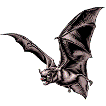Museum, University of Nebraska State

University of Nebraska State Museum: Mammalogy Papers
Document Type
Article
Date of this Version
2-14-1981
Citation
Journal of Mammalogy (1981) 62(1): 154-159.
Journal website: http://www.mammalsociety.org/pubjom/index.html
Abstract
". . . Mr. Whitehead has made a most wonderful and unexpected discovery, that of a new and peculiar Mammal-fauna inhabiting the Luzon highlands, and, so far as is yet known, mostly isolated on a small plateau on the top of Monte Data, in the centre of Northern Luzon, at an altitude of from 7000 to 8000 feet." With this dramatic announcement, Oldfield Thomas (1898:377) introduced to naturalists the spectacular rats found by Whitehead: Crateromys schadenbergi, Carpomys melanurus, C. phaeurus, Batomys granti, Chrotomys whiteheadi, Celaenomys silaceus, and Rhynchomys soricoides. One of the most interesting of these to Thomas was R. soricoides, which he had previously named and briefly described in 1895. This shrew-rat is medium-sized with a very long muzzle, small eyes, short dense fur, dark brown upperparts, gray underparts, a short brown tail, and brown feet. Its very long and slender rostrum, small zygomatic plates, small white incisors, and tiny basined teeth indicated adaptations for special foods, possibly soft-bodied invertebrates. Nothing quite like Rhynchomys had been discovered before, either in the Philippines or elsewhere.
Thomas based his description of R. soricoides on five individuals collected by Whitehead, all from Mount Data. Two others were obtained from Mount Data during 1946 and subsequently reported by Sanborn (1952). Rhynchomys was represented by these specimens until 1961, when an example was caught on Mount Isarog in the southeastern part of Luzon. That specimen, which forms the nucleus of our report, is significant because it indicates that Rhynchomys occurs on at least one other highland in Luzon, and because some of its morphological features fall outside the range of variation of the series taken on Mount Data. The differences in external and cranial characters between the two samples suggest to us that the specimen from Mount Isarog was drawn from a population that is reproductively isolated from that on Mount Data. We hypothesize that the specimen represents a new species, which we name Rhynchomys isarogensis (new species), and describe below.


Comments
Copyright © 1981, American Society of Mammalogists. Used by permission.